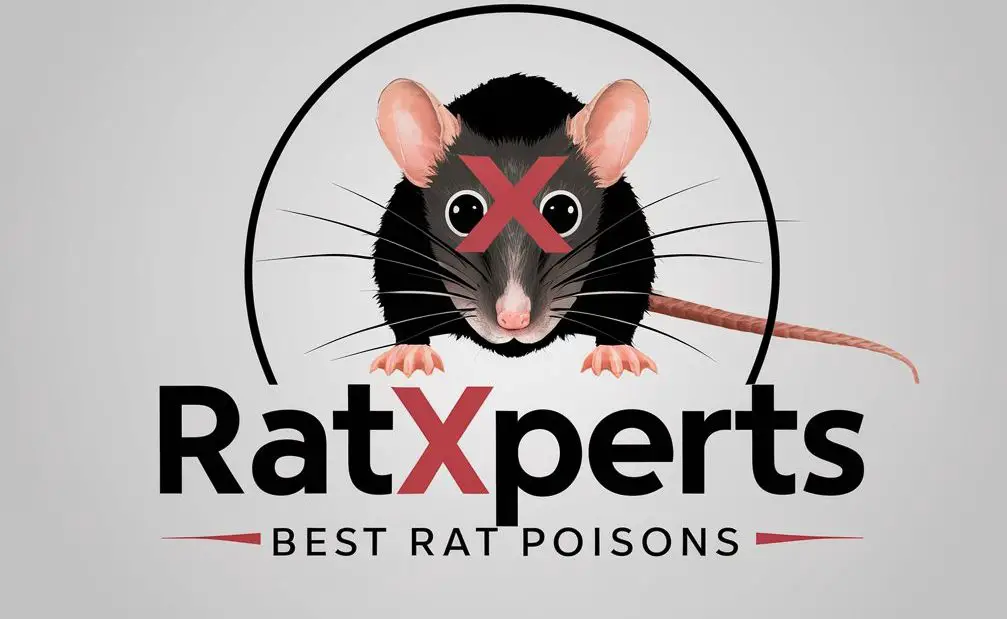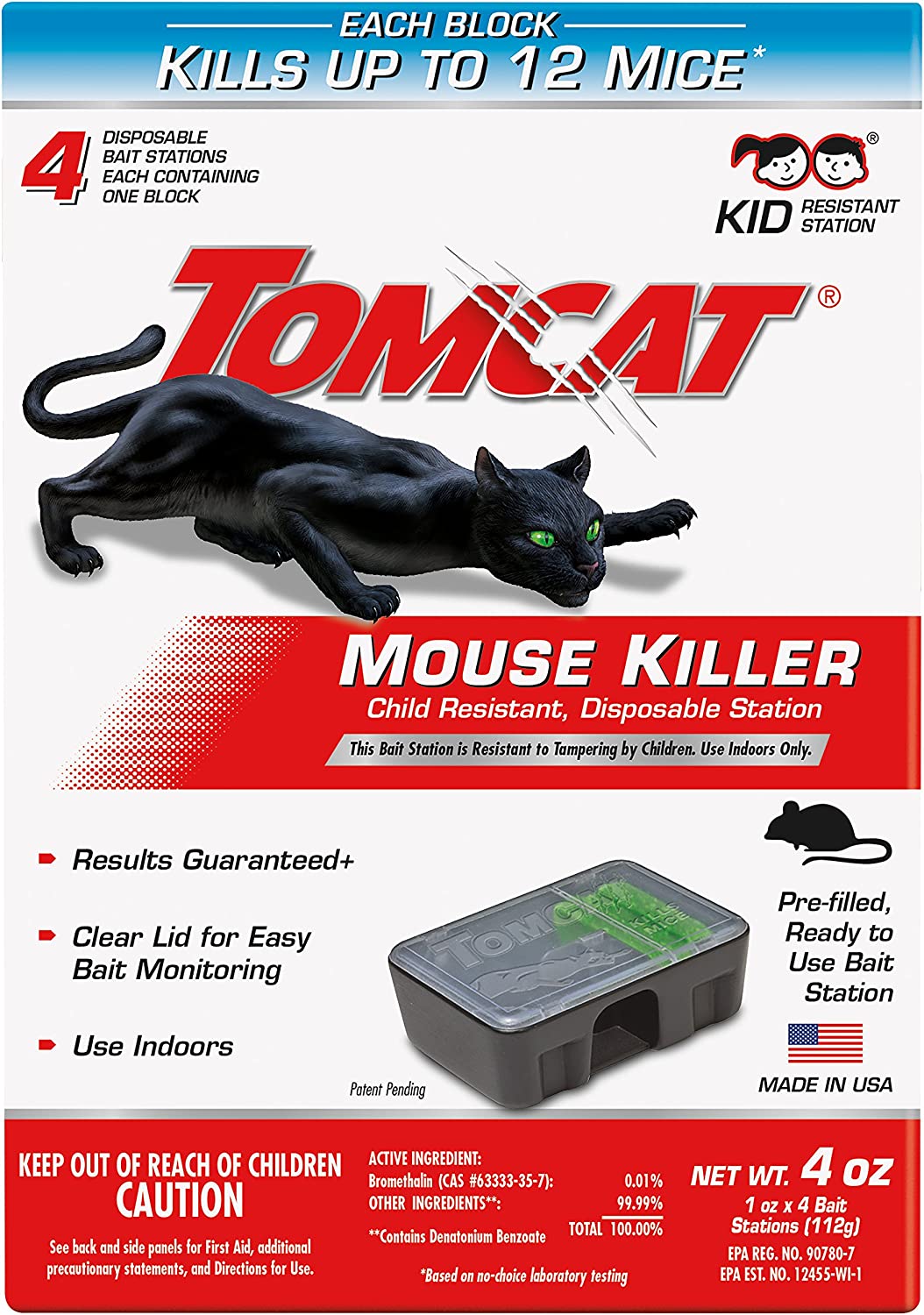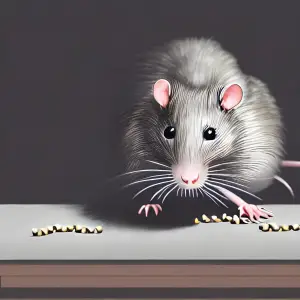Introduction
Rats can be a nuisance and a health hazard, but they can also be a danger to your dog. Here are some tips on how to kill rats without harming your dog.
First, try using traps. There are many different types of traps available, so you can choose the one that best suits your needs.
If trapping isn’t successful, you can also use poison.
What types of rat poison are safe for dogs?
Rat poisons are used to kill rats, mice, gophers, and other rodents. They come in many different forms, such as liquid, tablets, pellets, and bait. Some are designed specifically for use indoors, while others are meant to be used outdoors.
If you are like most dog owners, you want to keep your furry friend safe and healthy. This includes protecting them from harmful substances, such as rat poison.
Rat Poisons Safe for Dogs or Safe in Small Quantities
(Click on any image for more details)
-
Havoc Rat & Mouse Bait
-
This bait contains brodifacoum, which is a second-generation anticoagulant that is less toxic to dogs compared to first-generation anticoagulants.
-
Tomcat All-Weather Bait Chunx
-
This bait is designed to be weather-resistant and contains bromethalin, which is a neurotoxin that is considered safer for dogs in small quantities.
-
Final Blox Rat & Mouse Bait
-
This bait contains bromadiolone, a second-generation anticoagulant that is less toxic to dogs than first-generation anticoagulants.
-
Contrac Blox
-
This bait contains bromadiolone, similar to Final Blox, and is considered safer for households with dogs.
-
Rodent Sheriff Pest Control
-
This natural repellent contains peppermint oil and is safe for use around dogs, making it a non-toxic alternative to traditional rat poisons.
Dangers to Dogs from Rat Poison
Believe it or not, rats are very intelligent creatures. As far as rodents go, they’re the best at finding their way into your home. Despite their impressive smarts, you don’t want rats creeping through your house. The danger of rats lies in their aggressive nature and the diseases they carry. Additionally, they chew through critical components of your home, such as wires, beams, and pipes.
Direct Poisoning Danger to Dogs
There are many ways to deal with rodent populations, including setting traps and using poison bait. People with pets, however, need to be very careful about what methods they use to get rid of rats. Your pet can become infected with rat poison if it comes into direct contact with it.
Secondary Poisoning and how to prevent it.
Likewise, your pet can also suffer secondary poisoning. Secondary poisoning occurs when your pet comes into contact with or consumes a rodent who has ingested poison. This can be extremely harmful to pets like cats and dogs.
Types of Rat Poisons Available
There are several different types of rat poisons available. The most common ones include anticoagulants, rodenticides, and repellents. Anticoagulant rat poisons slow down the clotting system in the blood. This makes it easier for the rodenticide to enter the bloodstream and cause internal bleeding.
Rodenticides are designed to kill rodents by causing internal bleeding. These poisons usually contain zinc phosphide, bromethalin, diphacinone, chlorophacinone, and cyfluthrin.
Repellents are designed to repel rodents away from areas where they shouldn’t be. Repellents often contain oils, such as peppermint oil, citrus oil, eucalyptus oil, or cedar oil.
What Types of Rat Poison are Safe for Dogs?
Currently there are two pet-safe rat poisons on the market today. They can be used indoors or out. The first is a liquid formula that smells like cinnamon or cloves, which is placed in the burrow of a rat or other animal that’s been caught. The second is a granular formula that can be sprinkled in the burrow.
How to Choose the Right Rat Poison Safe for Your Dog
There are many types of rat poisons on the market, but which one is best for your rat dog? Before you buy any rat poison, it’s important to understand the different types available and how they work. This article will discuss the most common types of rat poisons and their benefits and drawbacks.
When looking for a rat poison, it is important to choose one that is specifically labeled as safe for pets. The poison should be placed in an area where pets cannot reach it, and it is important to keep an eye on pets after the poison has been placed to ensure that they do not ingest any of it.
There are a few things to consider when choosing a rat poison for your dog. The type of poison, the dosage, and the container all need to be considered. The type of rat poison you choose will depend on the size and breed of your dog. Some poisons are meant for larger dogs, while others are meant for smaller dogs. The dosage will also depend on the size of your dog. Generally, rat poisons come in either a pellet or a liquid form. Pellets are usually smaller and more easily absorbed by the body, while liquids are usually larger and take longer to absorb. Rat poisons can also come in different containers, such as a syringe or an aerosol can.
Fortunately, there are several types of rat poison that are safe for dogs. These include bait stations, liquid bait, and pellets. Bait stations are the safest option, as they protect the bait from being ingested by other animals.
Liquid bait is also safe for dogs, but it is important to avoid letting them drink the bait. Pellets are the least safe option for dogs, as they can be eaten and ingested.
The most effective way to control rats and mice indoors is to use a combination of traps and rodent bait stations.
Call a professional exterminator if you’re unable to remove the pest problem yourself. Also check out the following eco-friendly rat poison that is safe for pets:
Alternatives to Rat Poison
There are a few alternatives to rat poison when it comes to controlling rats. One option is to use non-toxic traps, which can be set out in areas where rats are known to frequent. Another option is to use rat poison, but be sure to choose a product that is specifically designed for pets and is safe for them.
Use Non-toxic Rat Traps
Non-toxic rat traps are not designed to kill rodents but to capture them. The rodent simply gets stuck in the trap. The problem with this method is that it is not a humane way to control rodents. The trap opens on sudden movement, and traps can be set on walls and floors. The rodent is then usually in constant pain as it struggles to free itself. If it does not, the rodent is at risk of suffocation from the trapped environment. This method is also unsafe around pets, as it can result in secondary poisoning. To avoid this, use a glue trap. Glue traps are typically put in inaccessible places such as corners or under sinks, and can be set to be triggered by a rodent movement.
Use Electronic Rat Traps
Another type of way to eradicate rats is by the use of electronic rat traps. Electronic rat traps come in several varieties. They can be as simple as a spring-powered trap that uses a motion sensor to trigger a trap. Other traps are battery-operated with a motion sensor. If a rat comes too close, it triggers the trap, trapping it. The trap is placed in a rat’s burrow or nest. You may also find electronic rat traps that simply trigger an electrical shock when the trap is activated. When used, electronic rat traps are similar to other types of traps. However, if you are trying to eradicate rats in a house or some other type of building, it is best to use a battery-operated trap. This way, you can monitor the trap and set it when you know a rat is in the nest or burrow.
Benefits of Electronic Rat Traps:
- The dead rodent is killed inside the trap, leaving you with no mental images of the dead animal.
- Electric shocks are delivered when an intruder is detected.
- An indicator light on the trap casing lets you know when the rat has died
Placing ultrasonic emitters around your house, such as Victor®’s PestChaser® models, will help keep mice away. If used according to the user’s manual, these electronic devices send out pulses of ultrasound at high frequencies that mice find irritating but that humans and pets cannot even hear. PestChaser® devices vary the volume and frequency of their bursts to prevent mice from becoming accustomed to the noise, making your home undesirably to them.
Salt as a Rat Killer
You might be surprised to discover the secret to this natural rat and mouse poison. I certainly was. The secret is salt! Upon entering the rodents’ intestines, it begins to dehydrate them. This recipe makes use of grains and peanut butter to attract the critters.
A recipe for this natural rat poison can be found at this website: https://www.diynatural.com/natural-rat-mouse-killer-pet-safe/.
Victor® Kill Vault™ Mouse Trap
Victor® Kill VaultTM Mouse Traps are a good choice for households with pets. Traps such as this one offer a 100 percent kill rate and kill quickly and humanely. The trap also prevents contamination from urine, feces, and blood by completely sealing in the dead rodent after it is killed.
Peppermint Oil Can Repel Rats
Peppermint oil has proven effective for homeowners in keeping mice away because mice are repelled by the strong scent of peppermint and will avoid areas where the aroma is present. If you would like to try this pet-safe mouse control method, use Victor®’s Scent-AwayTM peppermint oil repellents and place them in areas where you have observed rodent activity. Rodent repellents such as Scent-AwayTM are not as practical in confined spaces.
Use Dry Ice
Some people like to use dry ice to discourage rats from their premises. Dry ice is a great way to keep the rodents away because it is extremely cold and they are unable to eat it. You can place dry ice in corners, by the baseboards, and even in the pantry.
Safety Concerns:
-
Toxicity Levels: Rat poisons contain chemicals such as anticoagulants (e.g., brodifacoum, bromadiolone) that interfere with blood clotting and can lead to severe bleeding.
-
Indirect Ingestion: Dogs may come into contact with rat poison by consuming poisoned rodents or bait left out by homeowners, posing a risk of secondary poisoning.
-
Delayed Symptoms: Some rat poisons have delayed effects, making it challenging to identify poisoning until significant harm has occurred.
-
Variety of Products: There are different types of rat poisons available, including pellets, blocks, and powders, each with varying levels of toxicity.
-
Risk of Accidental Ingestion: Due to their curious nature, dogs may accidentally consume rat poison placed in accessible areas around homes or gardens.
Symptoms of Poisoning:
-
Bleeding: Look for signs such as blood in vomit, urine, stool, nosebleeds, bruising under the skin (ecchymosis), or bleeding from the gums.
-
Weakness: Dogs may exhibit lethargy, weakness, pale gums due to anemia resulting from internal bleeding.
-
Coughing or Difficulty Breathing: Respiratory distress can occur if there is bleeding into the lungs.
-
Swollen Abdomen: Abdominal distension may indicate internal bleeding.
-
Increased Thirst and Urination: Some rat poisons can cause kidney damage leading to increased drinking and urination.
-
Seizures or Tremors: Neurological symptoms like seizures or tremors may manifest in severe cases.
-
Immediate Veterinary Attention Required: If you suspect your dog has ingested rat poison or shows any symptoms related to poisoning:
- Do not induce vomiting without veterinary guidance.
- Contact your veterinarian immediately.
- Bring along the packaging or name of the product ingested for accurate treatment.
Understanding safety concerns associated with rat poisons and recognizing early symptoms of poisoning are crucial steps in protecting your canine companion’s health against accidental ingestion incidents
What to Do if Your Dog Accidentally Eats Rat Poison
To protect your dog from rat poison, it is important to keep rat poison and other poisonous substances out of their reach. Place rat poison in areas that are not accessible to your dog such as a locked cabinet.
If your dog happens to ingest rat poison, it is important to get them to the veterinarian as soon as possible. Symptoms of rat poison poisoning in dogs include vomiting, diarrhea, seizures, and bleeding.
Symptoms of rat poisoning in dogs depend on how much poison was ingested. Internal bleeding can occur as early as three days after ingestion. Your dog should receive immediate medical attention. .
If you think your dog has ingested rat poison, call your veterinarian immediately. Do not wait for symptoms to develop, as rat poison can be deadly to dogs.
You can also call the ASPCA Animal Poison Control Center at (888) 426-4435.
What is the treatment for rat poisoning in dogs?
Several factors determine treatment, including the type of poisoning, how much food was eaten and how long since the poisoning occurred. In view of the large variety of rodenticides available, the best treatment will be determined only after an examination by your vet.
Conclusion
Rat poison can be a dangerous product, but there are some types that are safe for dogs. When choosing a rat poison, make sure to select one that is specifically labeled as safe for dogs. If your dog does accidentally eat rat poison, seek veterinary help immediately.








